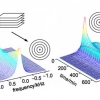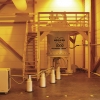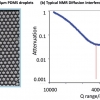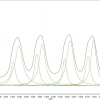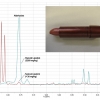Articles
Rheo-nuclear magnetic resonance spectroscopy: a versatile toolbox to investigate rheological phenomena in complex fluids
“Rheo-nuclear magnetic resonance spectroscopy: a versatile toolbox to investigate rheological phenomena in complex fluids” is Claudia Schmidt’s topic. Rheology is an important science, and NMR has a number of uses within it. However, challenges remain for the simultaneous measurement of rheological and NMR parameters.
Dating fossil teeth by electron paramagnetic resonance: how is that possible?
Mathieu Duval raises the question “Dating fossil teeth by electron paramagnetic resonance: how is that possible?”. Whilst we are all familiar with 14C dating, the use of EPR is less well known. In fact, there are less than 10 laboratories in the world able to carry out EPR dating of fossil teeth!
GHz NMR
Tony (A.N.) Davies is getting excited by GHz NMR. These new high fields offer tantalising new areas of research but at a cost that generally requires their purchase by Government-funded centres of excellence. He argues that continued funding of such projects is essential, especially in difficult economic times.
Nuclear magnetic resonance-based approach to fruit characterisation: the case studies of kiwifruits and peaches
Many analytical methods have been used to control the quality, authenticity and origin of fresh fruit. NMR methodologies yield a comprehensive metabolic profile, provide direct structural information regarding individual metabolites in the mixture and also give information regarding the water state in the tissue. This is useful in discriminating various fruits varieties, in investigating nutritional properties, in monitoring the development of the fruit and in assessing the optimum harvesting time.
NMR: is it the future for the analysis of organic molecules?
Peter Jenks has discovered quantitative NMR. in his article titled “NMR: is it the future for the analysis of organic molecules?”. If only it wasn’t so expensive, it might be the perfect method to certify pure organic compounds.
The use of nuclear magnetic resonance as an analytical tool in the characterisation of dispersion behaviour
Nuclear magnetic resonance (NMR) spectroscopy is one of the most powerful analytical tools used to probe details of molecular structure and dynamics. It requires very high magnetic fields and, hence, generally uses extremely large, powerful magnets. The advent of small, powerful magnets has allowed much less expensive low resolution NMR instrumentation to be designed, making it feasible to measure commercially important characteristics of dispersion behaviour and performance, including the wetted surface area of particulate suspensions and emulsion droplet size. An important additional practical application is the ability to determine competitive adsorption and/or displacement of polymers and surfactants at interfaces. This article presents a brief overview of these new approaches together with an example of each measurement.
A new approach to improving automated analysis of proton NMR spectra through Global Spectral Deconvolution (GSD)
1H NMR spectra are usually interpreted by hand, which is very time consuming, and can become a process bottleneck in fields such as high-throughput NMR. Greater automation of the spectral analysis process has become essential if NMR is to be of value as a high-throughput analytical method in the future.
Rapid NMR screening of total aldehydes to detect oxidative rancidity in vegetable oils and decorative cosmetics
Dirk Lachenmeier, Marina Gary, Yulia Monakhova, Thomas Kuballa and Gerd Mildau describe “Rapid NMR screening of total aldehydes to detect oxidative rancidity in vegetable oils and decorative cosmetics”. Lipid oxidation produces rancid products, which are both unpleasant and potentially toxic. The authors describe the use of NMR to screen food and cosmetic products. Whilst, vegetable oils were generally found to be in good condition, German women may wish to be careful of their lipstick, especially if they have had kept it for a while!
A toast to dynamic NMR spectroscopy: towards a better comprehension of palatable emulsions
An NMR tour of Mediterranean anise-flavoured alcoholic beverages.
DOSY NMR, a new tool for fake drug analyses
This article outlines the use of the DOSY NMR method applied to drug analysis and screening for counterfeit drugs or fake herbal medicines
A short history of magnetic resonance imaging
A brief history and personal recollection of the development of magnetic resonance imaging (MRI).
Who has the best proton NMR crystal ball?
There has been much debate about which program can predict NMR spectra the best. It is well known within the NMR community that spectra prediction strongly depends on the “quality” of the starting data sets for those systems which use real data as a knowledge base. It has become a hot topic in some blogs, although disappointingly most of the authors tend to have affiliations to one software vendor or another.
Quantitative NMR spectroscopy in the quality evaluation of active pharmaceutical ingredients and excipients
The purpose of this short review article is to highlight some capabilities of qNMR spectroscopic methods in drug quality evaluation, indicating that qNMR spectroscopy should be more often applied when chromatographic methods are not working effectively.
Nuclear magnetic resonance: stepping up to the PAT challenge
Our focus here is analytical procedures and the role of nuclear magnetic resonance (NMR) in particular. These have, until now, largely relied on conventional chromatography, and vibrational spectroscopy—infrared (IR), Raman and near infrared (NIR) spectroscopy. In spite of inherent difficulties with peak assignment and reliable quantification, vibrational spectroscopy has been used to derive information on reaction progression to impart fundamental understanding. This article sets out a wider scope to show how NMR can play a key role. Furthermore, NMR integrates well with established procedures to provide a suite of useful technologies that make the PAT challenge tractable.
The power of electron paramagnetic resonance spectroscopy in pharmaceutical analysis
Helen Williams and Mike Claybourn
AstraZeneca, Silk Road Business Park, Macclesfield, Cheshire, SK10 2NA, UK
The prediction of 1H NMR chemical shifts in organic compounds
Raymond J. Abraham and Mehdi Mobli
Chemistry Department, The University of Liverpool, PO Box 147, Liverpool L69 3BX, UK
Highlight Article: LC-NMR/MS
Steve Down
HD Science Limited, 16 Petworth Avenue, Toton, Nottingham NG9 6JF, UK
Olive oil as seen by NMR and chemometrics
Luisa Mannina,a,b Anatoli P. Sobolevb and Annalaura Segreb
aUniversity of Molise, Faculty of Agriculture, 86100 Campobasso, Italy
bInstitute of Chemical Methodologies, CNR, 00016 Monterotondo Staz., Rome, Italy
Superconducting magnets: at the heart of NMR
Alan Street
Technical Director, Oxford Instruments Superconductivity
NMR: still listening to whispering hydrogens? What else do they tell us 50 years after their discovery?
It is now more than fifty years ago that Felix Bloch and Edward Mills Purcell independently discovered a phenomenon called nuclear magnetic resonance (NMR). Only a few years later, in 1952, both received the Nobel Laureate Physics award for this discovery. Purcell and Bloch were the first to “listen” to the whisperings of hydrogen. They eventually obtained an NMR spectrum representing the different “pitches” of the nuclei, a property, which reflects the physico–chemical (electronic) neighbourhood of the nucleus.

